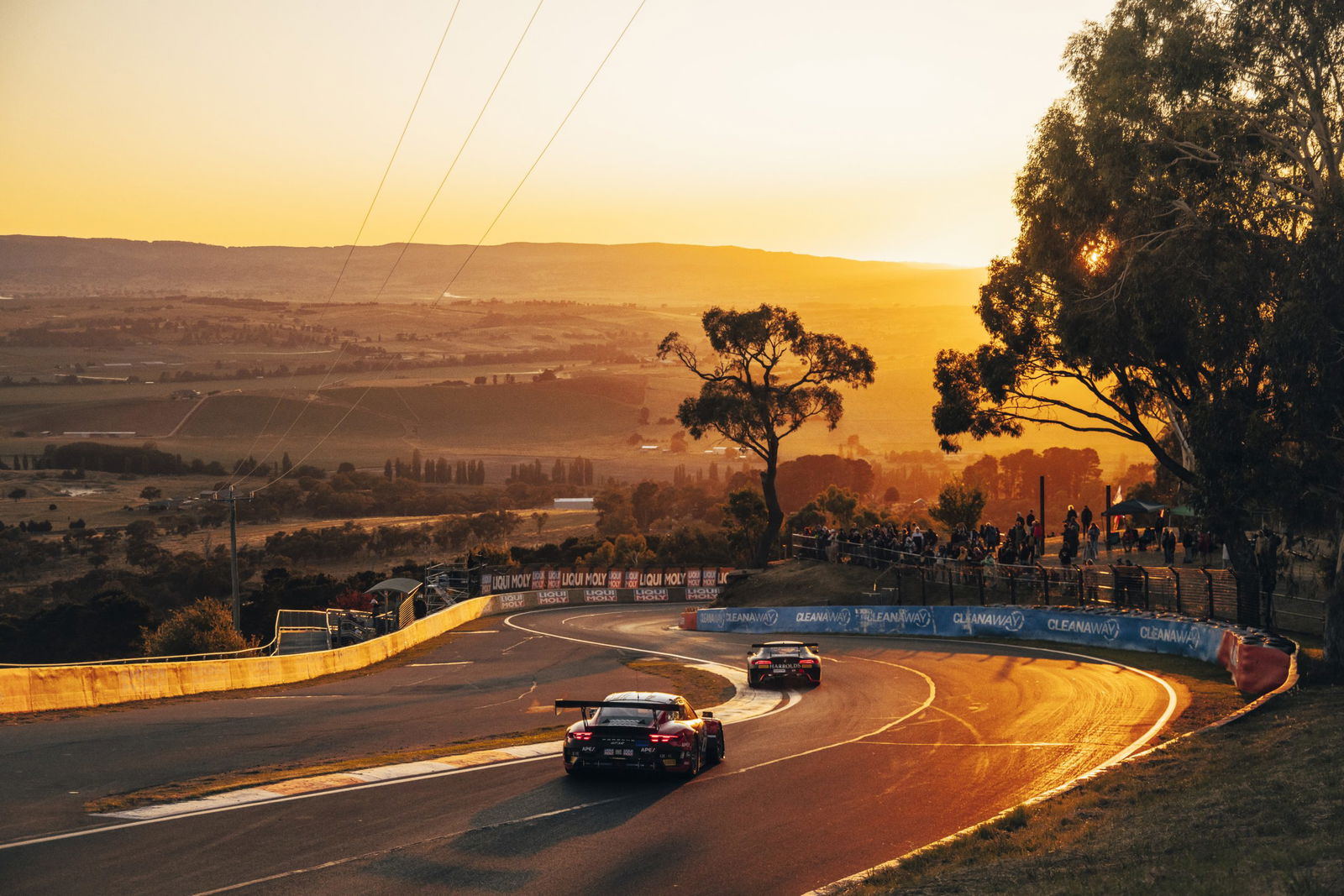

Questions over the date have been raised in the lead-up to this weekend’s race, which has attracted an entry of just 22 cars.
While the drop has largely come in the reduction of local Invitational entries, the grid for Australia’s international enduro has not returned to the heights it reached before the COVID-19 pandemic.
The event has long taken place in February to allow European teams to attend and return home before their own seasons begin.
This year Bathurst sits two weeks earlier than in 2024, returning to its traditional slot a week after the Daytona 24 Hours, creating a double-header for many drivers.
Perhaps more importantly for entry numbers, the January/February period is packed with GT3 events across Asia and the Middle East.
The Dubai 24 Hour and Abu Dhabi 6 Hour took place on consecutive weekends in mid-January, while the Asian Le Mans Series has two of its three events on the weekends directly after Bathurst.
“Last year we moved the date to try to work around the Asian Le Mans Series, because the last thing we want to do is clash with another event,” Rudzis explained to Speedcafe.
“Our goal is always to have clean space and we’re back to our traditional home, a week after Daytona.
“Some people are saying we should go later in the year, we should go to March.
“For us in Australia, you’re going up against F1 [at Albert Park], but also it means the cars that come from overseas can’t get home to their championships in time. It’s too risky for them.
“Any earlier in the year, early in January, it’s almost too close to holidays, and you’ve got teams just not able to commit to it.
“So, I believe we are in our sweet spot where we are. We have been in this first week in February for a long time.”
The challenge of getting competitors to commit to Bathurst has been made more difficult in recent years by sharp increases in freight costs.
“Times are very different now. Freight is expensive and hard,” he added.
“Bringing a car to the event is a lot more expensive now that it ever has been, that’s a huge factor, as well as the global calendars.
“If we had a lot more GT3 cars on the ground here, you could look at a lot more leasing kind of models with teams, which some did that back in the day. There’s a future there.”
Despite the event failing to reach the car counts it did pre-COVID, Rudzis notes other key metrics – from general admission to corporate sales and manufacturer activations – are on the rise.
This year marks a decade since Supercars took over the running of the Bathurst 12 Hour, gaining control over an event that had already established its place on the international racing calendar.
“The event is in a really strong position,” Rudzis said.
“The stuff we do off track with manufacturer involvement, demonstration sessions and the Harris Park merchandise area, it’s bigger than ever.
“It’s not just the race. It’s a big festival now, and it’s very different to how it was when we first came in and took over.
“It was very small back then and we’ve grown it into this very large event. Large events cost a lot of money as well, it’s costing us a lot of money to put it on, but it’s got a bright future.
“We’ll keep engaging with OEMs to get them involved, both from an on track and off track perspective, and that’ll keep growing the event the way it needs to grow.”
The Bathurst 12 Hour’s early February date allows Supercars to dedicate staff to the event before the start of its own championship later in the month.



















Discussion about this post